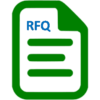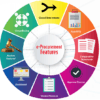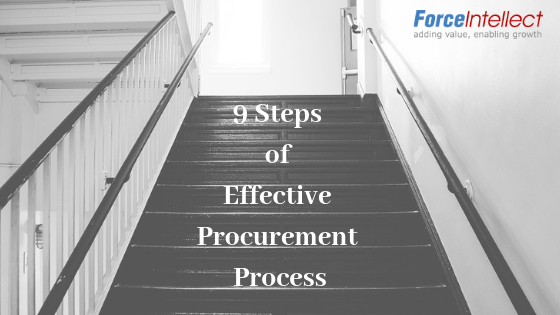9 steps of effective Procurement Process
The procurement process involves a series of activities undertaken to ensure the required materials are available at the right time in the right quantity. Procurement is a strategic business function which impacts the operations, supply chain, quality, cost and profits of most business organization. Hence it is crucial to have an effective Procurement Process.
An effective procurement process involves understanding & consolidating the procurement needs of all departments/units of an organization, finding out suitable vendors, evaluating their terms and conditions, carrying out negotiations or bidding, identifying the right vendor/suppliers, to ensure, procurement of best quality goods and services at best possible prices
This article describes the 9 Steps of an Effective Procurement Process. These will help organizations to perform key Procurement activities in an accurate manner. Thus, eliminating chances of errors and improving visibility and coordination among all stakeholders in the Procurement process. We appreciate that every business will have unique procurement requirements. An organization may use these points as broad guidelines while defining their procurement processes.
Step 1: Identifying procurement needs
 The first step in the procurement process is the identification of procurement needs. Procurement needs can be identified by end users as and when required. Companies can also use demand planning methods for identifying procurement needs. Procurement needs are raised through the Purchase Requisition form. This process is also called Indenting. Purchase Indent or Requisition should capture details of the items to be procured such as item description, item make, required quantity, required date, cost centers, requested by, etc. If the end user has specific quality requirements it should also be mentioned in purchase request or indent.
The first step in the procurement process is the identification of procurement needs. Procurement needs can be identified by end users as and when required. Companies can also use demand planning methods for identifying procurement needs. Procurement needs are raised through the Purchase Requisition form. This process is also called Indenting. Purchase Indent or Requisition should capture details of the items to be procured such as item description, item make, required quantity, required date, cost centers, requested by, etc. If the end user has specific quality requirements it should also be mentioned in purchase request or indent.
Step 2: Purchase Requisition Review
Any procurement activity involves efforts & cost implications. Poor procurement practices may lead to inventory overstocking or under stocking. Before initiating the procurement, Procurement Request should be approved by all concerned departments. E.g. Procurement Requisition should be verified by end user, project/ department heads, store departments, budget approving authority.
Step 3: Selecting the source of supply
 Selecting an appropriate source of supply is a crucial factor in ensuring successful procurement. It depends on various aspects such as availability of material, location of supply, the urgency of requirements, etc. Procurement team evaluates Procurement Requisitions (PR) on such deciding factors and shortlists vendors for the sourcing of items. Vendor Registration is also a key focus area of the procurement process. Having a directory of qualified vendors, their business information, key items and categories served by them ensures that the company can contact the right vendors for its procurement needs.
Selecting an appropriate source of supply is a crucial factor in ensuring successful procurement. It depends on various aspects such as availability of material, location of supply, the urgency of requirements, etc. Procurement team evaluates Procurement Requisitions (PR) on such deciding factors and shortlists vendors for the sourcing of items. Vendor Registration is also a key focus area of the procurement process. Having a directory of qualified vendors, their business information, key items and categories served by them ensures that the company can contact the right vendors for its procurement needs.
Step 4: Sending RFQs (Request for Quotation)
 Request For Quotation document is a standard process to request vendors to submit their quotations or invite them to take part in bids. RFQ is sent to shortlisted vendors. RFQ documents include details about items required, specification, quantity, required on date, terms and conditions for supply and more such details. RFQ document should also have a validity date; by the end of this date, all vendors should submit their quotes. RFQ is also prepared before initiating the bidding process.
Request For Quotation document is a standard process to request vendors to submit their quotations or invite them to take part in bids. RFQ is sent to shortlisted vendors. RFQ documents include details about items required, specification, quantity, required on date, terms and conditions for supply and more such details. RFQ document should also have a validity date; by the end of this date, all vendors should submit their quotes. RFQ is also prepared before initiating the bidding process.
Step 5: Evaluation of Quotes/ Bids
 This is the process before the selection of a vendor for supply of item or services. In the evaluation process, all bids/ quotes submitted by vendors are evaluated on various parameters such as cost, taxes, freight, other charges, delivery terms, etc. Organizations may also prepare comparative statements to easily compare various offers and conditions offered. After the evaluation process, vendor/(s) is selected for the supply of item or services. This process may have multiple interactions including negotiation and revised quotation submission activity. Also, multiple people from the organization may be a part of the approval process during evaluation.
This is the process before the selection of a vendor for supply of item or services. In the evaluation process, all bids/ quotes submitted by vendors are evaluated on various parameters such as cost, taxes, freight, other charges, delivery terms, etc. Organizations may also prepare comparative statements to easily compare various offers and conditions offered. After the evaluation process, vendor/(s) is selected for the supply of item or services. This process may have multiple interactions including negotiation and revised quotation submission activity. Also, multiple people from the organization may be a part of the approval process during evaluation.
Step 6: Purchase order
 Purchase Order is the official document used by an organization confirming the supplier for the order of material or services. Purchase order document includes items required, price, credit terms, terms of supply, delivery schedule, shipment scope, and details and other such details related to the order of items. As part of the best practices of Procurement, organizations should ask vendors for the confirmation of the purchase order.
Purchase Order is the official document used by an organization confirming the supplier for the order of material or services. Purchase order document includes items required, price, credit terms, terms of supply, delivery schedule, shipment scope, and details and other such details related to the order of items. As part of the best practices of Procurement, organizations should ask vendors for the confirmation of the purchase order.
Step 7: Receipt of Material & inspection
 Vendors should deliver the material/ services within the stipulated time. On receipt of material, it should be physically verified/counted to ensure it is properly received. Also, notify the inspection authority for a thorough inspection. After inspection, the material is included in the store or inventory. If any discrepancy is found or there is any problem with the material, it has to be notified to the vendors.
Vendors should deliver the material/ services within the stipulated time. On receipt of material, it should be physically verified/counted to ensure it is properly received. Also, notify the inspection authority for a thorough inspection. After inspection, the material is included in the store or inventory. If any discrepancy is found or there is any problem with the material, it has to be notified to the vendors.
Step 8: Invoice Approval & Payment process
 For invoice and payment processing, received the invoice is checked against goods received note (GRN), and against purchase order for the price, terms conditions, etc. This process is also called ‘Three-way matching’. Once the invoice is approved, it is due for payment. Payment due date is decided by credit terms defined in the purchase order. Accounts department initiates payment process against invoices due for payments.
For invoice and payment processing, received the invoice is checked against goods received note (GRN), and against purchase order for the price, terms conditions, etc. This process is also called ‘Three-way matching’. Once the invoice is approved, it is due for payment. Payment due date is decided by credit terms defined in the purchase order. Accounts department initiates payment process against invoices due for payments.
Step 9: Record-keeping
 The whole procurement process involves many transactions such as Purchase Requisition, RFQs, Quotations/ Bids, Comparative Statements, Approval of Comparative Statements, Purchase order, Goods Received Note, Invoices, Payment and many such documents. For organization record keeping is crucial for fulfilling statutory and compliance requirements. Organizations have to keep all records in such a manner that they can be retrieved whenever required.
The whole procurement process involves many transactions such as Purchase Requisition, RFQs, Quotations/ Bids, Comparative Statements, Approval of Comparative Statements, Purchase order, Goods Received Note, Invoices, Payment and many such documents. For organization record keeping is crucial for fulfilling statutory and compliance requirements. Organizations have to keep all records in such a manner that they can be retrieved whenever required.
How e-Procurement software can help?
The procurement process involves collaboration and communication among various stakeholder. Procurement has multiple stages and can be complex. Multiple business units, a large number of stock keeping units (SKUs) and Purchase Requisitions can make procurement process cumbersome.
 An e-Procurement solution can help in managing such complexities. It can automate various business functions such as vendor registration, approval systems, Comparative Statement generation, etc. It can speed up collaboration and communication process. e-Procurement can help organizations by bringing transparency in procurement, save time, effort and procurement costs.
An e-Procurement solution can help in managing such complexities. It can automate various business functions such as vendor registration, approval systems, Comparative Statement generation, etc. It can speed up collaboration and communication process. e-Procurement can help organizations by bringing transparency in procurement, save time, effort and procurement costs.
Read now more about Force-Intellect e-Procurement Solution

